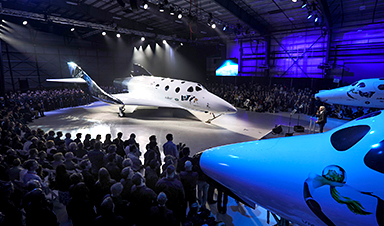Leave it to Richard Branson to find motivation to go to the gym in traveling to space. On Tuesday, a ship from Brason’s space flight company, Virgin Galactic, achieved supersonic speed in a test run for the second time. To Branson, that means the first passenger flight to the edge of the atmosphere is coming soon. He plans to be aboard, and has been cycling and playing tennis to prepare, as he told the Washington Post.
Branson’s exercise regimen might seem a bit premature. But the truth is that future space tourists will need to be fit enough to handle space, too.
Ripping through the atmosphere at twice the speed of sound, as Virgin Galactic plans to, puts a lot of pressure on the body. Zero gravity does the exact opposite. According to NASA, without gravity’s constant pressure, young, healthy astronauts lose bone density. And they lose it fast — 12 times faster in space than elderly adults do on Earth — making their bones very brittle, risking breaks when they’re back on their home planet. Since it takes no effort to move around in space, muscles —including your heart — don’t have to work as hard, so they weaken.
Image Credit: Mark Greenberg / Virgin Galactic
Nanomedicine and Human Spaceflight at Nanoapps Medical Inc.:
Nanomedicine may facilitate the development of a wide array of advanced nanomedical diagnostic and therapeutic capabilities dedicated to the health and well being of future astronauts and space pioneers, the inhabitants of future Lunar and Mars colonies, and deep space explorers. These nanomedical innovations may form the core elements of advanced extravehicular space suits that have numerous advantages, such as continuous real-time health monitoring, virtually instantaneous in situ diagnostics, the auto-administration of therapeutics, and the capacities to address serious accidental circumstances and performance of emergency interventions.







Leave A Comment